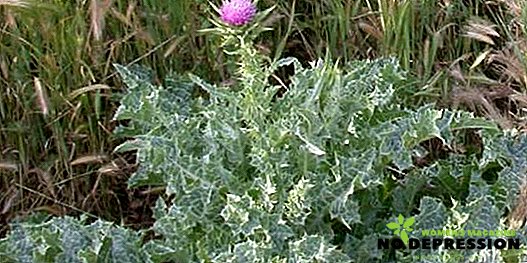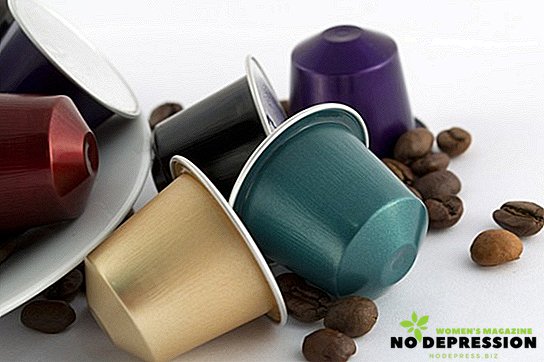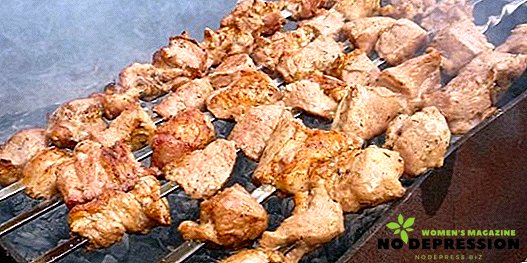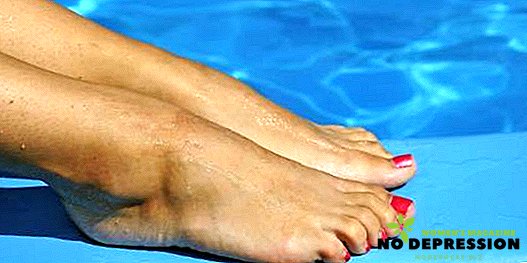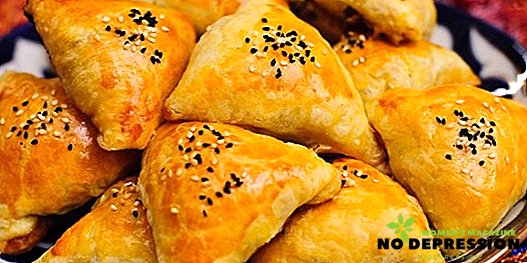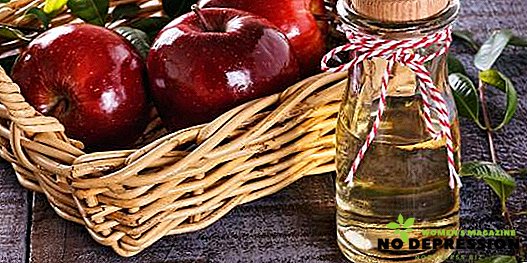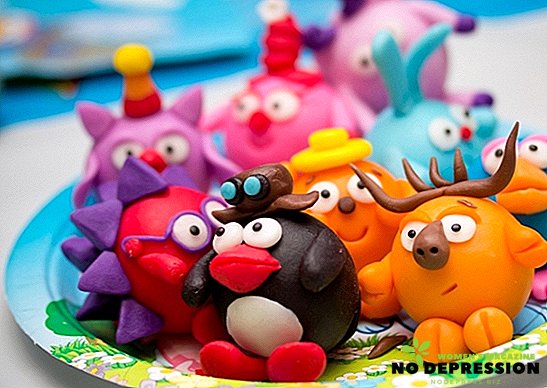At the end of June, tansy bloom on the meadows, banks of water bodies and roadsides. Herb medicinal plant with fragrant, yellow buds. Over 100 years, herbalists have been using it. For the preparation of infusions, decoctions, ointments using the flowers of the plant, in rare cases - foliage, stems and seeds. Inflorescences contain vegetable poisons - alkaloids. Therefore, before treatment with tansy, it is recommended to visit a doctor, get information and advice.
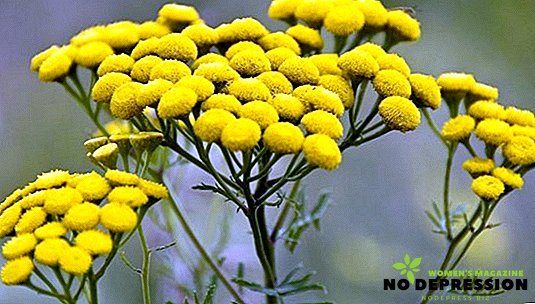
Plant description
 Tansy grows in loamy lands, tolerates frost well. Distributed throughout Russia, except for areas of the North. The height of the bushes - 0.8-1.2 meters. Dark leaves with a persistent odor have an elongated, oblong shape. The root is long, superficial, branched. Small flowers of yellow color form inflorescences in the form of baskets. It blooms all summer and first half of autumn. Seeds ripen in late August.
Tansy grows in loamy lands, tolerates frost well. Distributed throughout Russia, except for areas of the North. The height of the bushes - 0.8-1.2 meters. Dark leaves with a persistent odor have an elongated, oblong shape. The root is long, superficial, branched. Small flowers of yellow color form inflorescences in the form of baskets. It blooms all summer and first half of autumn. Seeds ripen in late August.
The medicinal properties of the plant due to the composition, which contains:
- alkaloids;
- tanacetin;
- tannins;
- flavonoids;
- oily essential oils;
- other medicinal substances.
In a dry form, polysaccharides, vitamins, proteins and glycosides are also present in the grass.
Collecting and harvesting
Raw materials are harvested during flowering, from July to August. For the manufacture of drugs used flowers. They are saturated with alkaloids and essential oils. Harvesting is carried out on dry, sunny days. In wet weather, bushes absorb harmful impurities. Do not recommend collecting raw materials near highways, factories, gas stations.
Baskets inflorescences cut with a sharp knife, measuring 10 centimeters from the top. Laid out on paper or cloth. Dry in shaded areas with good ventilation. Also use electric dryers, maintaining the temperature not higher than + 40 ° C. It is impossible to overdry the grass to avoid falling flowers.
Dried raw materials are stored in paper or linen bags.
It is important! To improve the efficiency of the prepared drugs, tansy flowers recommend tearing without a stem, in the first half of June.
Beneficial features
The healing composition of the plant has a beneficial effect:
 antimicrobial;
antimicrobial;- astringent;
- healing;
- diuretic;
- anti-inflammatory;
- pain medication;
- strengthens the walls of blood vessels;
- choleretic;
- anthelmintic;
- relieves spasms;
- antipyretic;
- sudorific.
Grass cleans the blood, removes toxins. Acts as an anti-inflammatory drug. These properties of the plant are used in the treatment of inflammation of the kidneys, stomach, liver, intestines, pancreas.
Tansy is widely used for gallbladder disease, gout. Relieves colitis, joint pain and rheumatism. Stabilizes the digestive system.
A positive effect on the work of the heart muscle, helps to increase pressure. Decoctions of tansy are prescribed for the treatment of nervous conditions and headaches.
In addition to these ailments, tansy is recommended in the complex therapy of oncological diseases.
Fresh or dry grass scares off fleas, flies, mosquitoes and bedbugs. Tansy is tied up in bunches and hung in places of insects.
What does tansy treat?
Doctors prescribe tansy-based drugs for the following diseases:
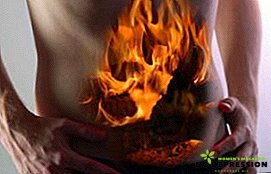 cholecystitis;
cholecystitis;- chronic hypoacid gastritis;
- enterobiosis;
- colitis;
- purulent wounds;
- infectious diseases;
- gynecological complications;
- rheumatism;
- jaundice;
- anemia;
- heart disease;
- insomnia;
- epilepsy;
- constipation.
Recommend a therapeutic plant for the prevention of diseases, strengthen the immune system and improve the overall condition of the person.
The use of tansy in traditional medicine
Healers and herbalists make tinctures, ointments, decoctions, rinses from flowers, leaves and roots of tansy.
Used in the treatment of diseases such as:
 Rheumatism - take 50 grams of flowers of tansy, add 1 liter of dessert wine from nutmeg grapes. Put in a dark place, soak for 7 days. Drink with pain in the joints and muscles 1 tablespoon 20 minutes after breakfast.
Rheumatism - take 50 grams of flowers of tansy, add 1 liter of dessert wine from nutmeg grapes. Put in a dark place, soak for 7 days. Drink with pain in the joints and muscles 1 tablespoon 20 minutes after breakfast.- Seborrhea - 50 grams of dried flowers pour 1.5 liters of hot water. Keep on low heat for 15 minutes. Cover and clean for 10 hours. In the morning, strain through a tight sieve. The resulting infusion to moisten the scalp.
- Gynecological inflammation - take 30 grams of dry inflorescences, brew a liter of boiling water. Let stand for 2 hours, strain. Drink 100 ml not more than 2 times a day.
- Swelling and pain in the legs - 4 tablespoons of grass boiled in 1 liter of water for 15 minutes. To sustain 5 hours. Pour into a basin, add a handful of salt and hot water. Keep your feet in the pelvis for 20 minutes.
- Kidney disease - mix crushed: lingonberry leaves - 20 grams, horsetail - 10 grams, flowers of tansy - 10 grams. Pour 200 ml of boiling water. Insist 1 hour. Drink on an empty stomach twice a day.
- Arthritis, arthritis - take 5 teaspoons of elderberry leaves, currants, turns, tansy, horsetail. Mix, pour 1 liter of water. Bring to a boil over low heat, do not boil. Strain, pour into a bath with warm water. Take such procedures 3 times a week. Course - 15 baths. Repeated treatment is carried out in 1.5 months.
Broth for hair
A decoction of tansy strengthens, heals, nourishes brittle and weakened hair. It is easy to prepare it: 2 tablespoons of dry grass pour 0.5 liters of hot water. Cook on low heat for 15 minutes. Cool and filter. To wash hair, to apply on them and scalp decoction. To rub in the massing movements. Wrap a warm towel. Keep until dry hair. Do not flush. The procedure is repeated 3-4 times in 10 days.
Infusion
Infusion consumed inside with ulcers, gastritis. Prepare as follows: 1 dessert spoon of dried inflorescences brew 250 ml of boiling water. Leave for half an hour. Take 0.5 tablespoons in the morning and evening after meals.
Infusion for external use: grind flowers and leaves. 1.5 dessert spoons of the resulting powder pour 250 ml boiling water. Insist 2 hours. Healing infusion to pour into the bath, use for compresses, lotions and rubbing. Treats gout, bruises, sprains, sprains.
When chills, overwork, loss of strength in the infusion add a teaspoon of salt. Rub their hands and feet.
If there is a risk of allergic reactions to grass, it is advisable to test for tolerability. Apply a few drops of broth to the elbow bend from the inside. Wait 5 hours. If redness, itching and rashes do not appear, the grass can be applied without fear.
Store infusion of tansy is recommended in the refrigerator.
Tansy alcohol

Tincture alcohol from the flowers of tansy is especially popular with herbalists. This is explained by its long storage without loss of quality. Apply to gargle, treatment of stomatitis, cauterization of cuts. Tincture relieves pain after surgery.
Cooking Recipes:
- In 100 ml of vodka, add 2 dessert spoons of tansy. Clean the closet for 10 days. Shake daily. Strain, refrigerate. Gargle with stomatitis: stir a teaspoon in a glass of warm boiled water.
- Grind on a coffee grinder 2 tablespoons of herbs. Add 150 ml of alcohol and a teaspoon of honey. Soak in a dark room for 10 days. Take 0.5 teaspoons of pain.
Alcohol abusers cannot use the tincture inside!
How to take from parasites without harm to health
The second name of tansy is known - the worm. Grass is recommended for the destruction of worms: Giardia, pinworms, Ascaris.
There are two forms of treatment: ingestion and enemas.
 For oral administration:
For oral administration:
- Crush the color of tansy to a powder.
- Take 0.5 tsp.
- Wash down with warm water.
Take in the evening after dinner 7 days. If desired, add fresh honey to the powder. To improve the result in the morning drink a laxative medication. This will help to quickly cleanse the body of worms.
For enema:
- Grind in a coffee grinder 1 tablespoon of tansy.
- Mix the powder with 3 teeth of chopped garlic.
- Pour 0.5 liters of milk.
- Keep on low heat for 10 minutes.
- Cool and strain.
Enema with a warm solution is put on the night. For the effectiveness of the procedure, doctors advise to keep the decoction in the intestine for 5-7 minutes. After defecation, it is advisable not to go to bed and stay in motion for half an hour. Use of this treatment is allowed for children over 12 years old.
Precautions and contraindications
Useful qualities of tansy proven over the years and practice. But, as with any drug, the herb has contraindications to the appointment. The plant contains thujone and ketone poisons. Therefore, all drugs based on tansy should be consumed only as prescribed by a doctor, follow the rules of preparation and dosage.
Uncontrolled self-medication causes adverse symptoms: nausea, cramping of limbs, vomiting, diarrhea. Marked kidney damage, blurred vision, depression. If negative symptoms occur, immediately flush the stomach and call a doctor.

There are the following contraindications to treatment:
- pregnancy;
- breast-feeding;
- age under 7 years;
- diseases of the heart and blood vessels;
- hypertension;
- overweight;
- herb intolerance;
- gallbladder disease;
- fever.
It is worth remembering! Long-term treatment with tansy in the composition is undesirable. To avoid poisoning the body, between courses of therapy, breaks are necessary.
Be careful! Tansy is not just a healthy plant. Inflorescences and leaves contain poison, which affects the human nervous system. Therefore, before preparing decoctions and tinctures, you need to visit a doctor and get detailed advice on the use of tansy. This will help avoid negative symptoms and irreparable effects of treatment.


 antimicrobial;
antimicrobial; cholecystitis;
cholecystitis; Rheumatism - take 50 grams of flowers of tansy, add 1 liter of dessert wine from nutmeg grapes. Put in a dark place, soak for 7 days. Drink with pain in the joints and muscles 1 tablespoon 20 minutes after breakfast.
Rheumatism - take 50 grams of flowers of tansy, add 1 liter of dessert wine from nutmeg grapes. Put in a dark place, soak for 7 days. Drink with pain in the joints and muscles 1 tablespoon 20 minutes after breakfast.